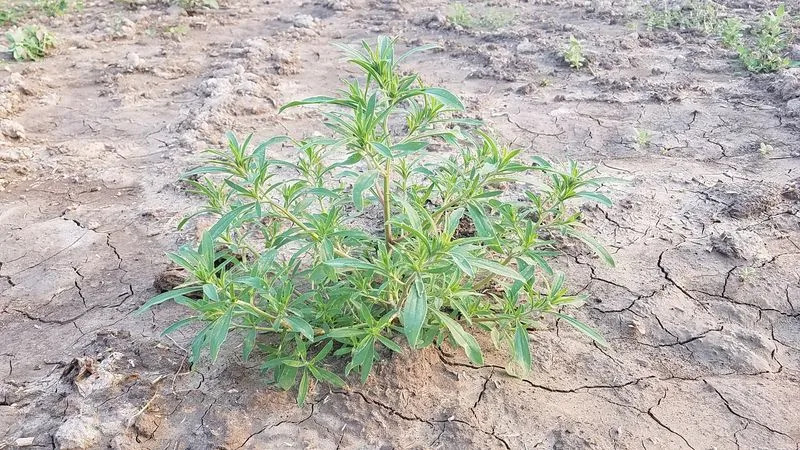
Kochia is seen in a field in Nyssa
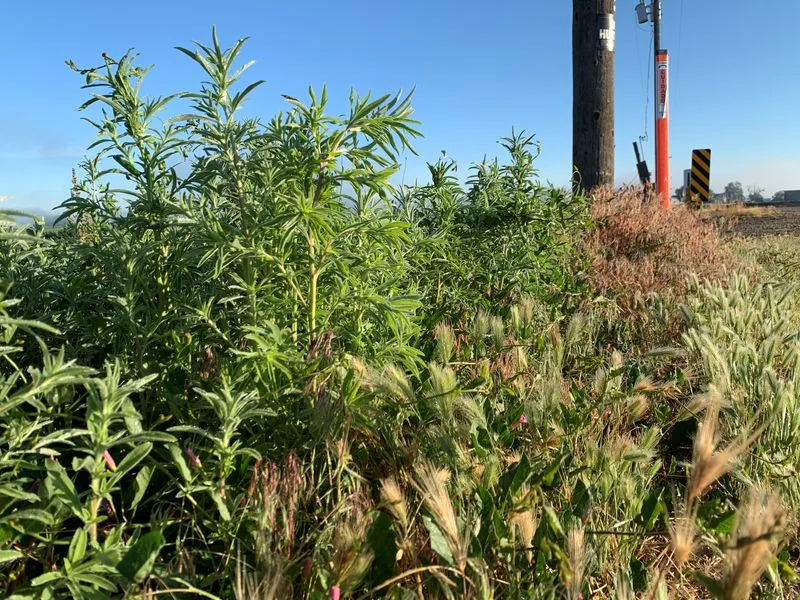
Kochia is seen along a roadside adjacent to a sugar beet field in Fruitland
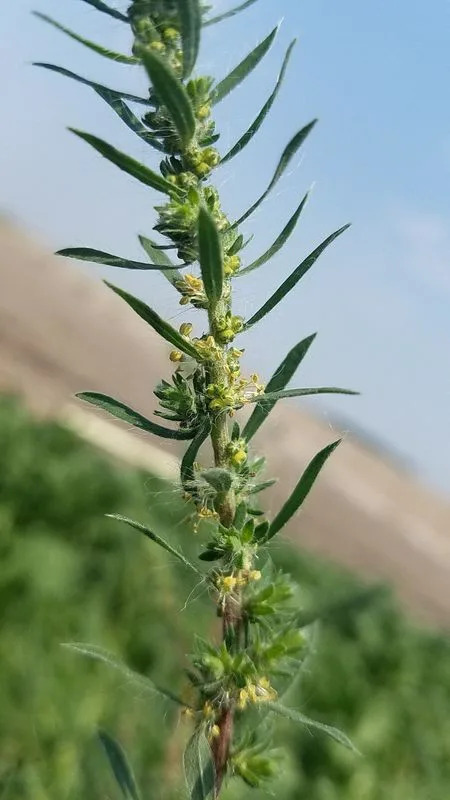
Kochia is seen in a sugar beet field in Parma
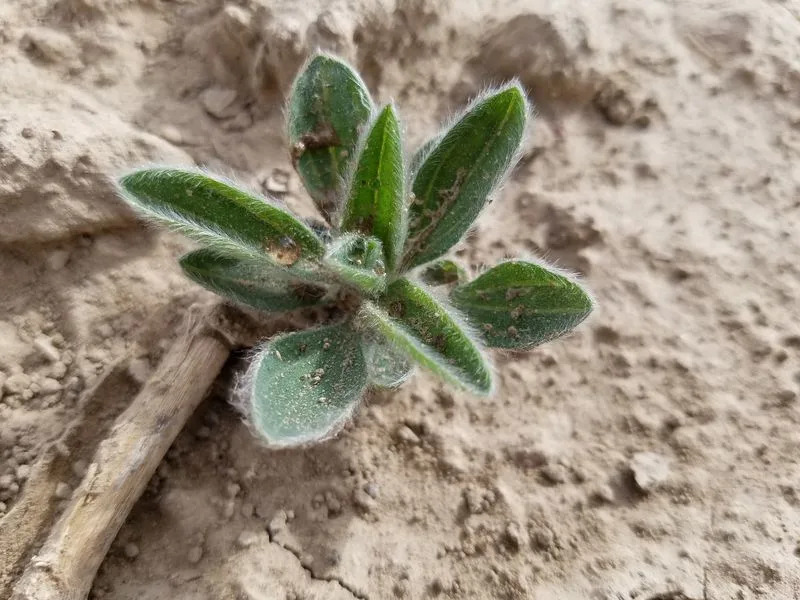
Kochia is seen in a sugar beet field near Nampa
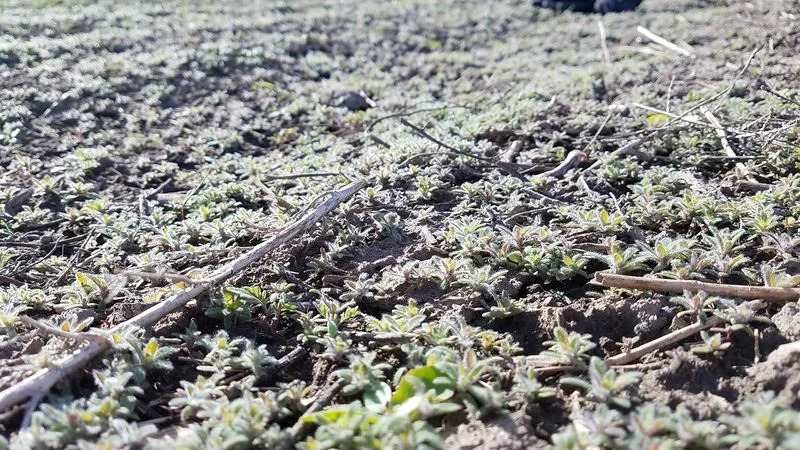
The weed kochia is seen in a field in Nyssa
Tue, January 16, 2024
By Rod Nickel and Tom Polansek
WINNIPEG, Manitoba/CHICAGO (Reuters) - Crop-killing weeds such as kochia are advancing across the U.S. northern plains and Midwest, in the latest sign that weeds are developing resistance to chemicals faster than companies including Bayer and Corteva can develop new ones to fight them.
In many cases weeds are developing resistance against multiple herbicides, scientists said.
Reuters interviewed two dozen farmers, scientists, weed specialists and company executives and reviewed eight academic papers published since 2021 which described how kochia, waterhemp, giant ragweed and other weeds are squeezing out crops in North Dakota, Iowa, Wisconsin and Minnesota as chemicals lose their effectiveness.
Over the last two decades, chemical companies have reduced the share of revenue devoted to research and development spending and are introducing fewer products, according to AgbioInvestor, a UK-based firm that analyzes the crop protection sector.
Farmers say their losing battle with weeds threatens grain and oilseed harvests at a time when growers are grappling with inflation and extreme weather linked to climate change.
"We're in for big problems over the next 10 years for sure," said Ian Heap, director of the International Survey of Herbicide Resistant Weeds, a group of scientists in over 80 countries that maintains a global database. "We are in for a real shake-up."
The database records reduced effectiveness for glyphosate, one of the most common herbicides, against 361 weed species, including 180 in the U.S., affecting corn, soy, sugar beets and other crops.
Some 21 weed species globally showed resistance to dicamba, the most recent major U.S. chemical, which launched in 2017.
Environmental groups argue that farmers should embrace natural weed-control methods instead of chemicals.
Kochia, which spreads as many as 30,000 seeds per plant, can cut yields by up to 70% if left unchecked, according to Take Action, a farmer resource program of the United Soybean Board.
Other factors, including the development of more robust seeds, have pushed overall global crop yields higher. But scientists expect weed problems to worsen, with some weeds showing resistance to chemicals even on first exposure.
'REALLY SCARY'
In Douglas, North Dakota, farmer Bob Finken sprayed dicamba and glyphosate to kill late-season weeds. Neither product eliminated kochia.
"That was really scary," said Finken, 64. "Each year seems to get a little worse."
Finken was forced to clear the weeds with harvesting equipment, which risks clogging expensive machinery.
Other farmers are hiring workers to pull weeds by hand, said Sarah Lovas, an agronomist with GK Technology, a precision agriculture firm.
North Dakota was the largest spring wheat producing state in 2023 and ninth-biggest soybean grower.
Five of North Dakota's 53 counties have confirmed populations of dicamba-resistant kochia, a year after it was first reported in the state, North Dakota State University weed specialist Joe Ikley said.
"It's just a matter of time before it hits your farm," said Monte Peterson, 65, who grows soybeans near Valley City, North Dakota.
LAB SCALE-BACK
Chemical producers Bayer, Corteva and FMC say longer development and regulatory processes have constrained new products to combat weed resistance. Industry executives say regulators have become more stringent about environmental and health impacts.
The U.S. Environmental Protection Agency (EPA) said standards for approving new herbicides have not substantially changed since 1996. However, the EPA said recent efforts to assess the impact of new active ingredients on threatened plants and wildlife have delayed some decisions.
The EPA did not estimate the increased processing time. The agency said it expedites reviews of lower-risk products.
Farm chemical companies spent 6.2% of sales revenue on development of new active ingredients in 2020, down from 8.9% in 2000, AgbioInvestor said. Its data showed the introduction of new active ingredients fell by more than half in 2022 from 2000.
Instead, companies have expanded uses of existing products like dicamba, glufosinate and 2,4-D.
FMC plans the 2026 launch of an herbicide to kill grassy weeds in rice crops based on the industry's first new mode of action, a term for the way a chemical kills a weed, in three decades.
The herbicide was in development for 11 years. FMC hopes it will generate $400 million in sales within a decade, a fraction of the roughly $8 billion global glyphosate market.
"If we don't keep developing the new products, we are going to run into a wall where growers don't have the tools to combat the pests," CEO Mark Douglas said. "And then ultimately you face food security issues."
The world's biggest agriculture chemical and seed company, Germany's Bayer, hopes to produce its first new mode of action herbicide in over 30 years by 2028.
"We're really desperate for (new modes of action) if we're going to sustain uses for farmers," said Bob Reiter, head of research and development for Bayer's crop science division.
Two decades ago, companies commercialized a product for every 50,000 candidates, but it now takes 100,000 to 150,000 attempts, Reiter said.
U.S.-based Corteva said it has incorporated sustainability criteria, such as reduced groundwater risk, in its research and development, aiming to clear the path with regulators.
It hopes that approach will shorten the regulatory process when it introduces a fungicide with a new mode of action against Asian soybean rust disease in Brazil around 2027, said Ramnath Subramanian, vice-president of crop protection research and development. He did not say how much shorter the process may be.
Bill Freese, scientific director of the Center for Food Safety in Washington, said farmers should shift away from crops genetically engineered to tolerate herbicides, which lead to plants becoming resistant to multiple chemicals through repeated sprayings.
"It's like this toxic spiral," Freese said. "There's no end in sight."
(Reporting by Rod Nickel in Winnipeg, Manitoba and Tom Polansek in Chicago; Editing by Caroline Stauffer and Suzanne Goldenberg)
No comments:
Post a Comment